Learn how to make a balanced smoothie with protein, carbs, fat, and fiber to help you feel your best, keep you full and satisfied, and keep your blood sugar balanced. Easily customizable with different flavor varieties!
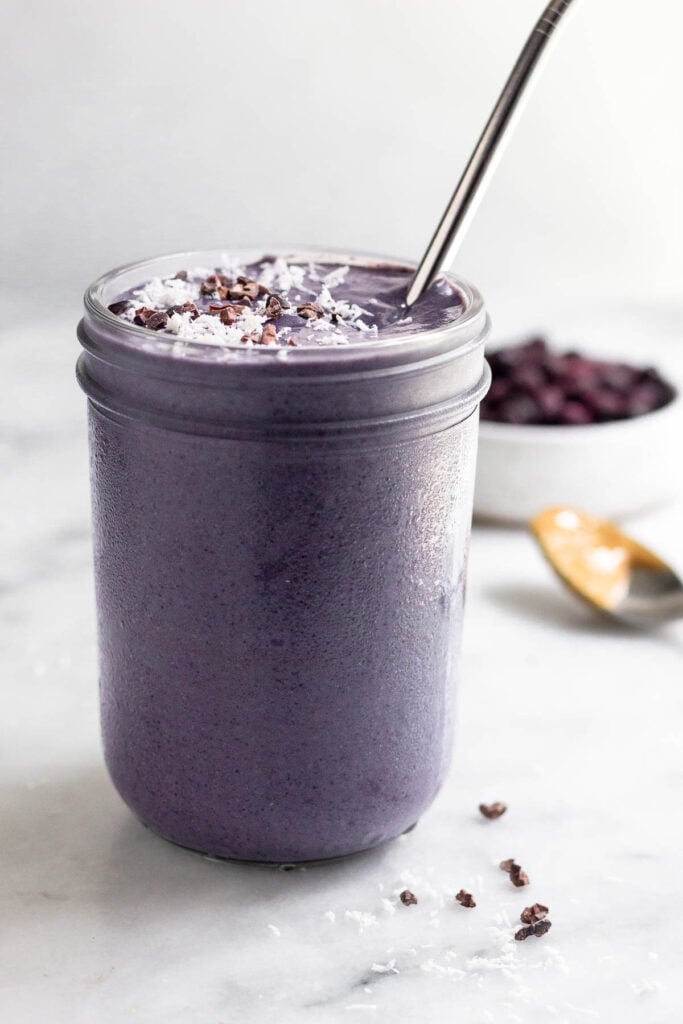
I love a good smoothie. I make them year-round, but as the weather gets warmer, I crave them more and more. They are super customizable, loaded with vitamins and minerals, and can make an easy meal or snack. Today we are talking about how to make sure you are building a balancing smoothie!
Smoothies can sometimes get a bad rap. And I get it. Unfortunately, most are loaded with fruit, which translates to sugar. This spikes your blood sugar, causing it to fall fast, and making you feel tired and sluggish. There is nothing worst than enjoying a smoothie but then being hungry and tired an hour later.
But if done right, they can be a great addition to any diet. We are going to talk about not only how to build a balanced smoothie and the key factors to have in them, but why it is beneficial to make them this way!
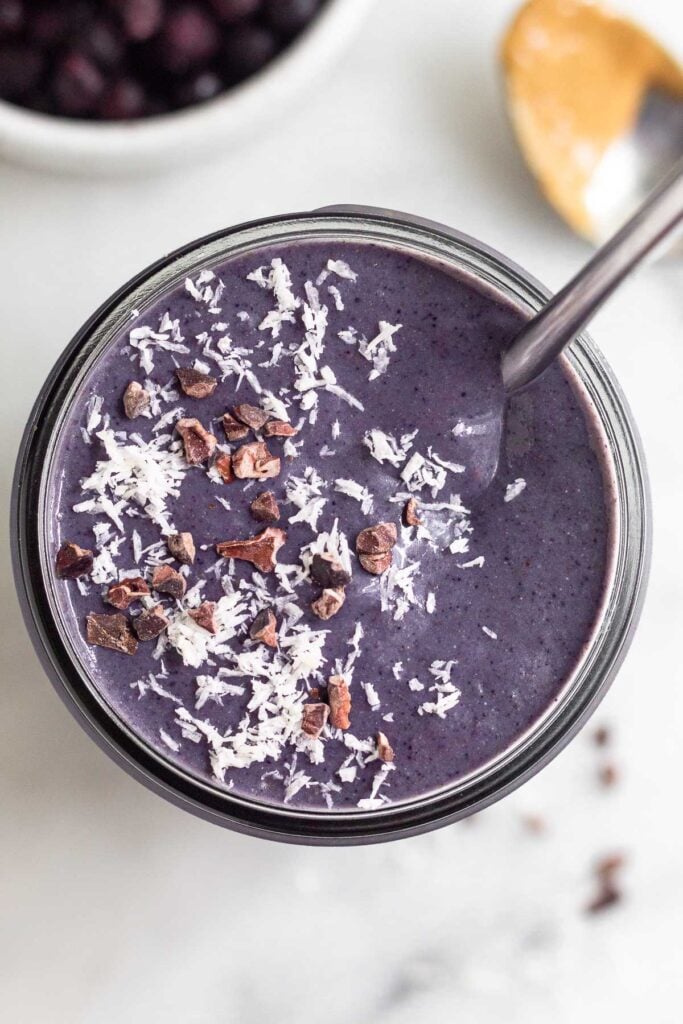
Why we love making balanced smoothies
- quick and easy to make – most are ready in 5 when you have a stocked freezer and pantry.
- flavor possibilities are endless
- they set us up to feel – when making them with the right ratio of protein, carbohydrates, and fat, it helps keep our blood sugar balanced and to avoid those spikes and crashes that some smoothies can do.
- loaded with nutrients – they can be an easy and delicious way to get in tons of vitamins and minerals depending on what you put in them.
- cheaper than your typical smoothie or juice shop (and probably better for you!)
Benefits of building a balanced smoothie
- balanced blood sugar – when we eat too many carbs without enough protein or fat (which is typical in some smoothie recipes), our blood sugar spikes. The body then works to shuttle glucose (sugar) out of the bloodstream. Sometimes it can overcompensate and that’s when we feel that crash. Energy plummets, we feel tired, cravings can hit, and we feel hungry shortly after eating. Pairing protein and fat with our carbs helps prevent the blood sugar roller coaster. This is huge for preventing cravings.
- prevents cravings – when our blood sugar gets too low, our body craves sugar to bring it back up. By balancing your meals (and your blood sugar), you can help prevent later cravings.
- better sleep – you may not be eating smoothies before bed, but balanced blood sugar means better sleep.
- balanced energy – this supports the point above, but when pairing all 3 macronutrients together, we will have long-lasting and balanced energy.
- helps keep you full – protein, fat, and fiber are all going to help slow down digestion. This is going to help fill us up and stay full for longer.
- balanced hormones – it’s hard to have balanced hormones without balanced blood sugar. How we eat helps make sure we are supporting our hormones.
- getting a wide variety of macro and micronutrients from different food sources at each meal – a diverse diet is important for optimal health
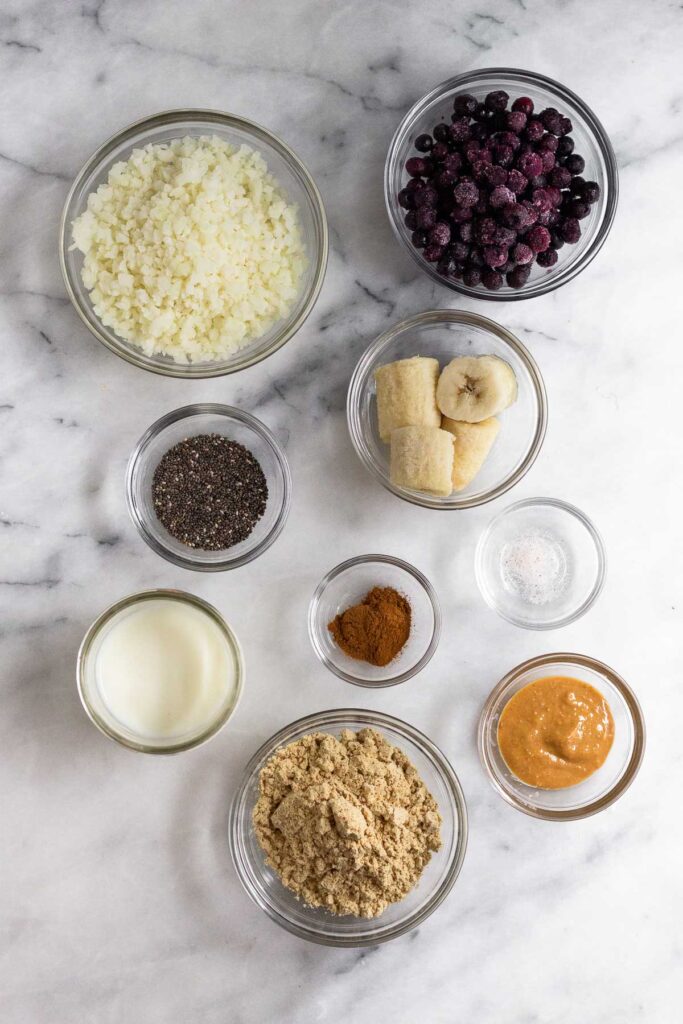
How to make a balanced smoothie
While you might think there isn’t a right or wrong way to make a smoothie, you do want to put some thought and effort into it. Not only do we want it to taste good, but we want to set ourselves up to feel full and satisfied and our blood sugar balanced.
Just like all meals, we want to think of protein, carbs, healthy fats, and fiber. Here are the key components and ingredients to building a healthy smoothie:
- frozen fruit – a must to make a delicious and cold smoothie! Fruit is going to add carbohydrates and fiber. I suggest 1-2 servings (just as if you were eating fruit). Anything goes – bananas, berries (strawberries, blueberries, raspberries…), pineapple, mangos, peaches, pears, cherries, and more. Not all the fruit has to be frozen, but some aspects of the smoothie should.
- vegetables – not a necessity, but I love to add some to up the vitamins, minerals, and fiber. And you usually can’t taste them. Some of my favorites are frozen cauliflower/cauliflower rice, spinach or kale, cooked and then frozen sweet potato, beets, and zucchini.
- protein – any kind you like! This is going to help slow down digestion and keep you full. Check out my favorite options below.
- healthy fats – along with protein this is going to help slow down digestion and help with fullness. Anything from nuts, nut butter, seeds, coconut milk, coconut oil, avocado, or full-fat dairy (yogurt or milk).
- liquid – the liquid is what helps bring it together and blend. Anything from dairy milk, unsweetened non-dairy milk, coconut water, or all-natural fruit juice will work. Be mindful if using juice and how much sugar it is adding. Opt for as little liquid as possible to make your smoothies thick and creamy.
And here are some add-ins to help bump up the flavor or benefits of your smoothie:
- natural sweeteners – if needed (be mindful of how much fruit you have). Honey, maple syrup, or Medjool dates can help sweeten it up.
- flavor additions – anything from cacao powder, to maca to help balance hormones, cinnamon, turmeric, ginger, matcha, flaxseed, sea salt, and more.
- ice cubes – if you don’t have that many frozen items, this can help chill it and also add bulk to the smoothie without adding calories.
- optional toppings – I love making mine super thick and into a smoothie bowl and then toppings it with granola.
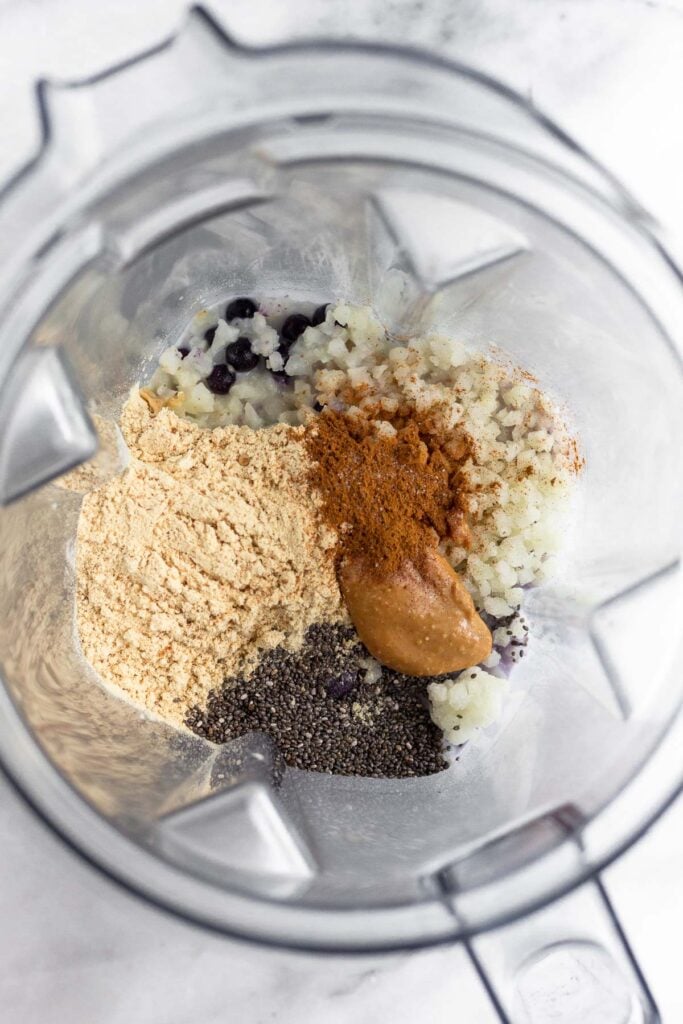
How to add protein to a smoothie
Protein is essential to have at every meal. It is the building blocks for our body (provides structure and function), helps with blood sugar balance (having stable energy) by slowing down the absorption of carbs, and digests slowly to help with feeling full to name a few.
Without it (and healthy fats), smoothies can feel pretty unfulfilling and have our blood sugar spike and then crash. Thus, leave us hungry an hour or two later.
Here are some ways to add protein to a smoothie:
- protein powder – whey protein, plant-based, or collagen are all great options. Flavors range from classic vanilla and chocolate to peanut butter and more!
- greek yogurt – opt for greek yogurt which has more protein than regular yogurt. This will also add some creaminess.
- cottage cheese -14 grams of protein per 1/2 cup!
- milk – cow’s milk will have more protein than your typical plant-based milk.
- kefir – drinkable fermented milk with a great source of probiotics
- nuts, nut butter, and seeds – peanut butter, almond butter, cashew butter, tahini, chia seeds, hemp seeds, flax seeds, sunflower seeds…
- tofu – a good vegan option and blends up super creamy with a neutral taste.
- beans – another great vegan option that also adds some fiber. Opt for black beans or neutral-tasting beans like cannellini beans.
Our daily protein intake should be tailored to our physiological needs, goals, activity, satiety levels, and digestion status.
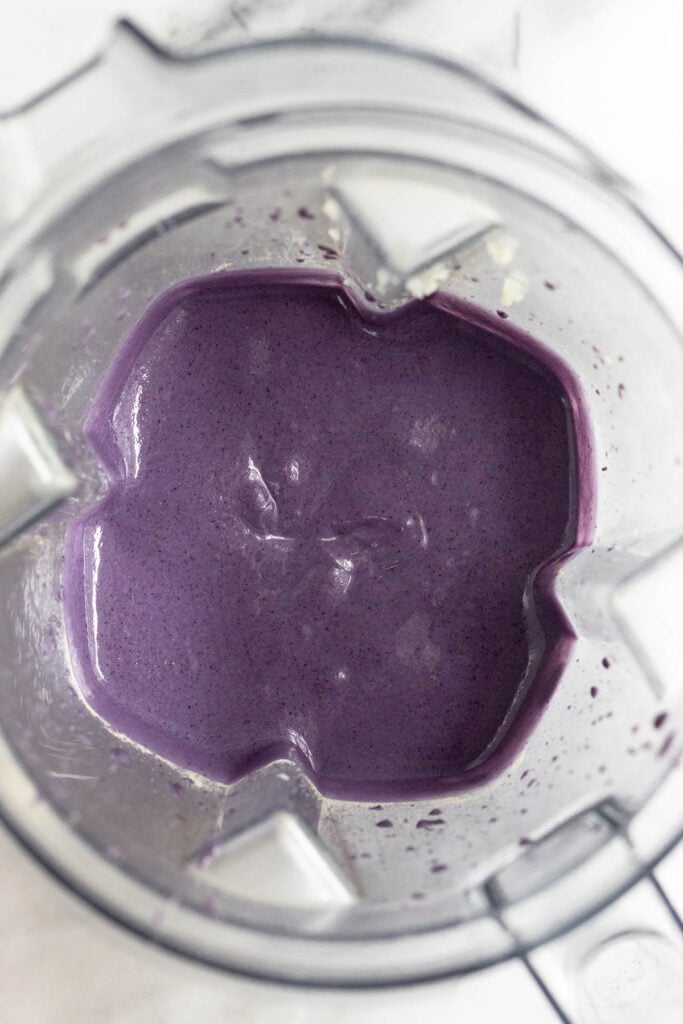
Can smoothies be meal replacements?
Smoothies can be enjoyed as meals as long as they have enough protein, carbs, and fat and total calories overall (similar to a standard meal for yourself) to help fill you up and keep you full until your next meal. Following the steps in this post will help ensure that!
How do I make sure my smoothie is healthy?
When making smoothies, it’s also important to have balanced macronutrients with protein, fat, and fiber (along with the carbs) so they fill you up, digest slowly, and don’t spike your blood sugar. Limit fruit to 1-2 servings and try to add in some veggies if you can. Incorporating all these things will help your smoothie be balanced and healthy!
More balanced smoothie recipes
- chocolate protein smoothie
- coffee protein smoothie
- green protein smoothie
- orange creamsicle smoothie with protein
- chunky monkey protein smoothie
If you love quick and easy meals and want to learn how to build a balanced plate, check out our FREE How to Build a Balanced Plate Guide!
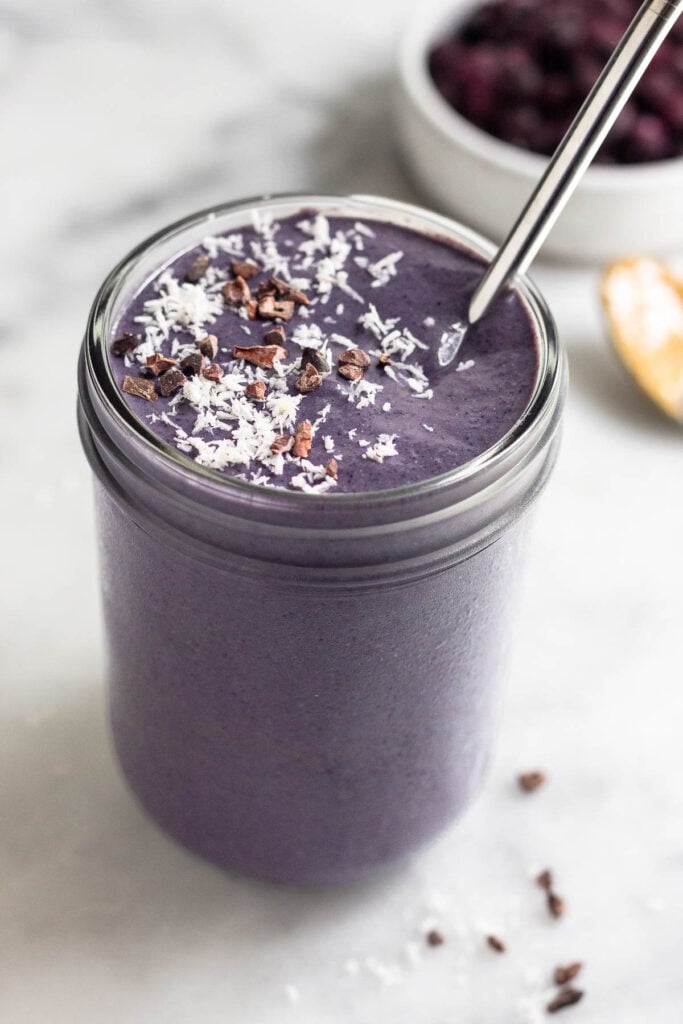






Leave a Rating & Comment